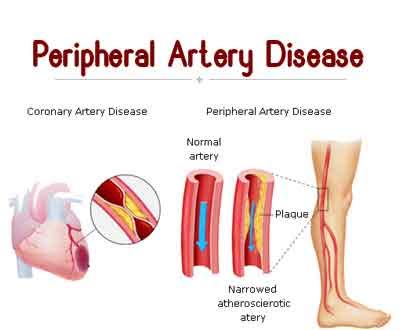- Home
- Editorial
- News
- Practice Guidelines
- Anesthesiology Guidelines
- Cancer Guidelines
- Cardiac Sciences Guidelines
- Critical Care Guidelines
- Dentistry Guidelines
- Dermatology Guidelines
- Diabetes and Endo Guidelines
- Diagnostics Guidelines
- ENT Guidelines
- Featured Practice Guidelines
- Gastroenterology Guidelines
- Geriatrics Guidelines
- Medicine Guidelines
- Nephrology Guidelines
- Neurosciences Guidelines
- Obs and Gynae Guidelines
- Ophthalmology Guidelines
- Orthopaedics Guidelines
- Paediatrics Guidelines
- Psychiatry Guidelines
- Pulmonology Guidelines
- Radiology Guidelines
- Surgery Guidelines
- Urology Guidelines
Blood flow evaluation key to early management of critical limb ischemia: American Heart Association

Non-invasive techniques and devices for assessing blood flow and other diagnostic considerations for people with critical limb ischemia are addressed in the statement have been published in the Association's flagship journal Circulation.
The statement provides perspective on the strengths and limitations of current imaging techniques, including the ankle-brachial index, toe brachial index, toe systolic pressure, transcutaneous oximetry (TcPO2) and skin perfusion pressure (SPP). It also examines tools such as the laser Doppler, speckle imaging devices and others, as well as identifying opportunities for technology improvement and reducing disparities in detection and treatment.
The authors noted sex and ethnic differences in how critical limb ischemia is diagnosed, coexisting conditions and disparities in treatment. Women are more likely to experience emergency hospitalization, have differences in blood flow, and higher disability and death rates.
Black and Hispanic patients with critical limb ischemia are more likely to have diabetes and chronic kidney disease and are more likely to develop gangrene. White patients are more likely to have ulcers and pain in their legs while at rest. Black patients are also 78% more likely to receive lower extremity amputation for critical limb ischemia compared to their white peers, even after adjustment for socioeconomic status, access to facilities with revascularization services and other factors.
Critical limb ischemia is the most severe form of peripheral artery disease (PAD), which affects an estimated 12 million Americans. It occurs when the arteries leading to the legs become narrowed or blocked. The condition can lead to gangrene, wounds that don't heal and amputations if blood flow is not returned to the limbs.
Despite the high prevalence of critical limb ischemia, strategies to assess blood flow remain limited. New technologies offer potential opportunities to improve the precision and quality of critical limb ischemia management, with the goal of earlier detection and treatment to reduce amputations and disability as well as improving the quality of life for patients.

Disclaimer: This site is primarily intended for healthcare professionals. Any content/information on this website does not replace the advice of medical and/or health professionals and should not be construed as medical/diagnostic advice/endorsement or prescription. Use of this site is subject to our terms of use, privacy policy, advertisement policy. © 2020 Minerva Medical Treatment Pvt Ltd